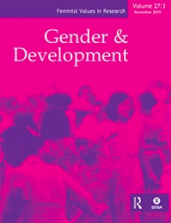Climate change vulnerability, impacts, and adaptation: why does gender matter?

Overview
Gender-related inequalities are pervasive in the developing world. Although women account for almost 80 per cent of the agricultural sector in Africa, they remain vulnerable and poor. Seventy per cent of the 1.3 billion people in the developing world living below the threshold of poverty are women. It is important that the consequences of climate change should not lead already marginalised sections of communities into further deprivation. But key development issues have been at best sidetracked, and at worst blatantly omitted, from policy debates on climate change. The threats posed by global warming have failed to impress on policy-makers the importance of placing women at the heart of their vision of sustainable development. This article argues that if climate change policy is about ensuring a sustainable future by combining development and environment issues, it must take into account the interests of all stakeholders. The Global Environment Facility and the Clean Development Mechanism of the Kyoto Protocol can play a role in ensuring sustainable development, provided they are implemented in a way that does not disadvantage women and the poor.
This article is hosted by our co-publisher Taylor & Francis. For the full table of contents for this and previous issues of this journal, please visit the Gender and Development website.
Additional details
Author(s)
How to cite this resource
Citation styles vary so we recommend you check what is appropriate for your context. You may choose to cite Oxfam resources as follows:
Author(s)/Editor(s). (Year of publication). Title and sub-title. Place of publication: name of publisher. DOI (where available). URL
Our FAQs page has some examples of this approach.


